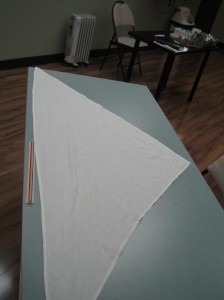Joint dislocation occurs when the bones in the body become misaligned. Usually, these injuries affect the muscles, tendons and ligaments of the joint causing pain. Although most dislocations arise from blows or forceful injury to the joint, some dislocations (particularly of the hip) are inborn or congenital resulting from faulty bone development. The most common dislocations involve the shoulders, fingers and thumbs although it can also affect the hips, elbow and ankle.
In general, dislocations are classified either as simple dislocation (does not involve an open wound) or compound dislocation (joint is visible through an open wound).
A dislocated joint cannot function normally, often causing pain on movement, limited range of motion, and even loss of function of the joint. In severe cases, dislocation can cause tearing of the tendons, ligaments, and muscles surrounding the joint. It can also impair circulation within the affected area leading to severe tissue damage. Young individuals who have had dislocated shoulder are at increased risk for recurrence.

Disclaimer: the information posted on this page on first aid for dislocations is for learning purposes only. To learn to recognize and manage dislocations, sprains and strains enrol in workplace approved first aid training by clicking here.
Causes of Dislocation
As mentioned above, forceful impact to the joint such as fall, blow or other trauma are the most common causes of joint dislocations. Diseases (either acquired or congenital) and defective ligament may also cause dislocation. Rheumatoid arthritis is one of the diseases that often lead to joint dislocation.
It is estimated that around two thirds of traumatic hip dislocations are due to motor vehicle accidents. Meanwhile, sports injuries and falls from height are also a leading cause of dislocation to the hip and shoulder joints.
Recognizing Dislocation
Normally, symptoms of joint dislocation are localized to the affected part of the body. The individual may present general symptoms that can help you recognize dislocation:
- Limited movement of joint or loss of motion
- Temporary paralysis of the joint
- Pain and tenderness of surrounding site
- Swelling and bruising around the joint
- Disfiguration or deformity of the affected joint
- Shock (especially if involving large bones or open wounds)
Providing first aid treatment
Prompt and proper first aid increases the chances of a complete recovery. Usually, the severity of the dislocation depends on its cause and the affected joint. Some joints just heal much faster than others. If you suspect someone has dislocated a joint, you can help by:
- Immobilizing the dislocated joint. DO NOT attempt to put back or re-align the joint.
- If possible, apply ice pack or cold pack over the joint to reduce swelling.
- Assist the victim to position of comfort.
- Provide support to the affected area such as using sling or splints. Listen to what the victim tells you.
- Call for emergency help.
- Dislocations involving the hip, ankle and leg joints require ambulance to transport the victim.
Victims of joint dislocation must be examined by a doctor for accurate diagnosis and proper treatment. Hip dislocations are a medical emergency and require immediate treatment. Some of the common emergency treatment procedures include:
- X-ray to determine the severity of the joint damage
- Medication to minimize swelling and pain
- Possible surgery to repair or tighten torn or stretched ligaments
- Physical therapy to restore movement and minimize recurrence in the future
DO NOT attempt to manipulate, pull or re-align the injured joint. Leave this task to a professional. If you suspect dislocation of the vertebrae due to neck or back injury, DO NOT move the person unless it is necessary, such as when establishing an airway, providing CPR or there is clear danger.
Related Articles
- Drive your victim or contact EMS for an ambulance? – Find Out Here
- How and When to Call EMS? – Read Here
